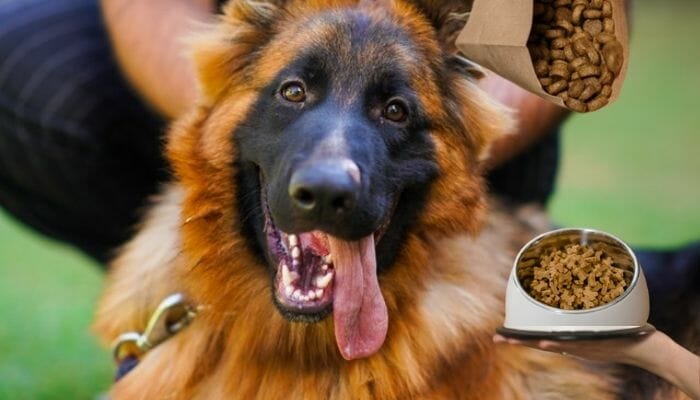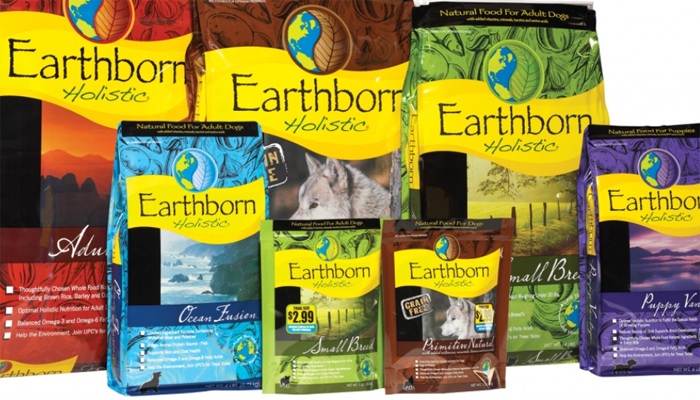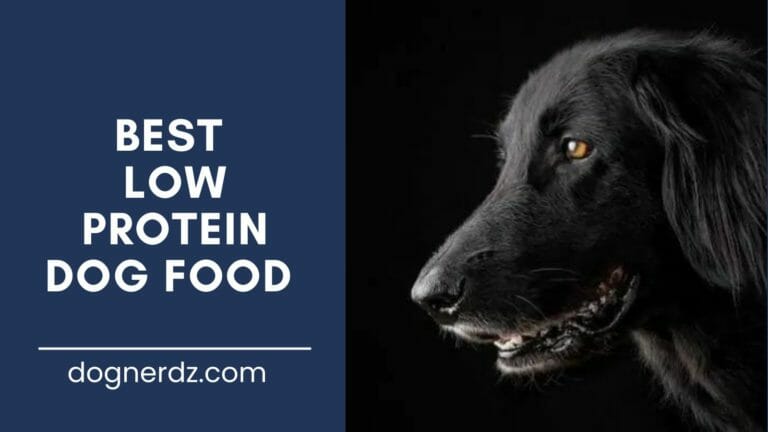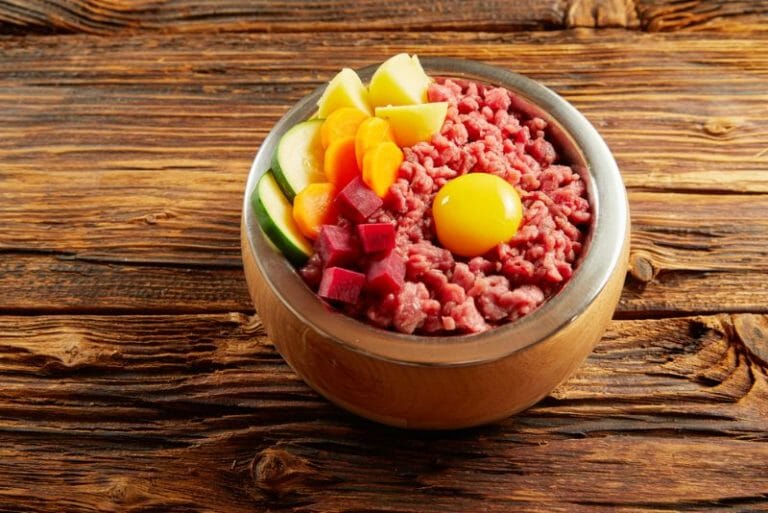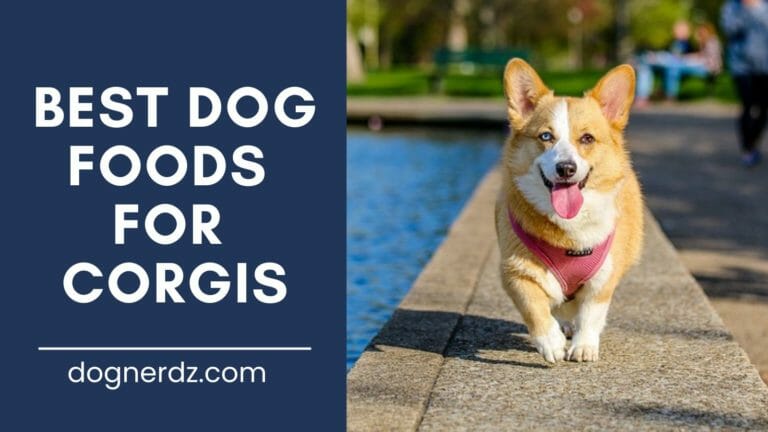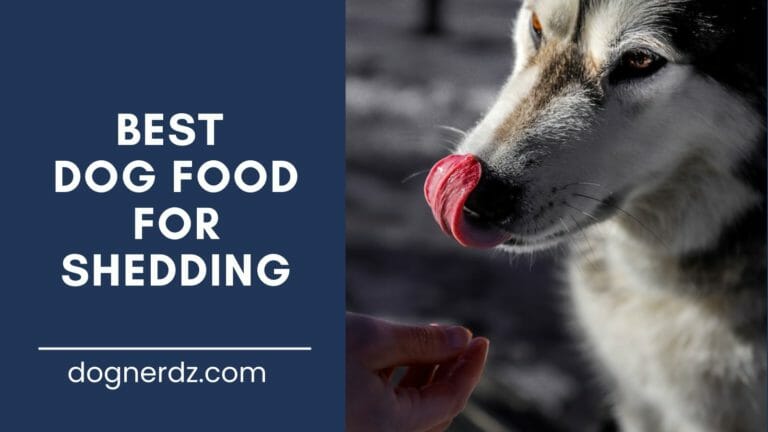How Much Should I Feed My German Shepherd
The noble German Shepherd stands proud as a favorite among service dogs and loyal friends.
They have a long history of being man’s best friend, and have cared for us and partnered with humanity for centuries.
It’s time for all potential German Shepherd owners to really understand the dietary needs of German Shepherds.
We will address questions such as how much to feed a German Shepherd, how to do it, and what they require nutritionally.
Table of Contents
How Much Do You Feed a German Shepherd?
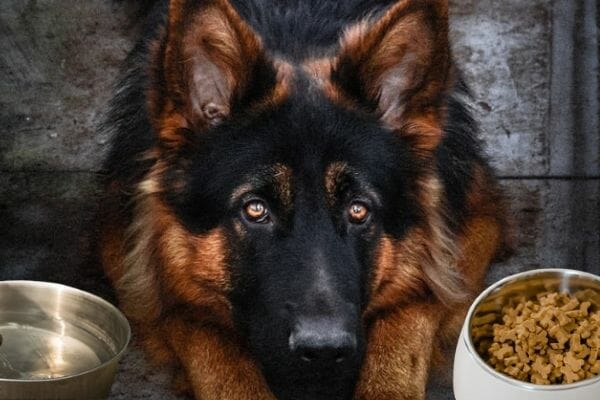
Let’s start by addressing the biggest question of the day – the correct amount to feed your German Shepherds.
German Shepherd puppies, adult dogs, and senior dogs have different requirements, so it’s important to make sure their diet is addressing their needs.
How Much to Feed German Shepherd Puppies
Depending on the age of your German Shepherd puppy and his activity level among other things, the general amount to feed a GSD puppy is anywhere from 1 to 3 cups spread out throughout the day.
Keep in mind that this is a generalization, and the specific amount will depend on your unique pup.
How Much to Feed German Shepherd Adults
As for the adult German Shepherds, these large breed dogs require anywhere from 2.5 to 3.5 cups of food per day.
The variance is due to the different sizes of German Shepherds there are out there and their activity levels and health.
How Much to Feed German Shepherd Seniors
Once your German Shepherds hit their senior years, which is generally around 7 years of age, they will require a different meal plan.
We’re looking at anywhere between 1.5 to 2.5 cups of food for a senior German Shepherd due to the decrease in activity levels and slower movement.
Factors to Consider that Impact the Amount You Feed a German Shepherd

As we mentioned, there are reasons why we didn’t give an exact amount, and they are also why it’s nearly impossible to give a concrete answer for how much food to feed a German Shepherd.
We’d suggest feeding your GSDs on a sliding scale, and keep in mind that you can increase or reduce the amount as needed when circumstances change.
1. Age
As you may have noticed above, the age of your German Shepherd is the first consideration. Puppies will need a lot of food to grow into healthy and strong adults, and aside from the amount, the nutrition they need is also different.
A German Shepherd puppy will require more protein, fats, and calories compared to adults and senior dogs.
If you have a very active adult dog, such as those in service, then chances are you will need to provide it with more protein to keep up with its energy levels compared to a companion adult German Shepherd.
As your dog slows down and hits its golden years, this is when you should switch from adult dog food to senior food.
Senior food contains fewer calories than regular adult food because a senior dog generally slows down and requires less energy.
Speaking of age, female German Shepherds will have different life stages to males, because they can go through pregnancy and nursing.
Pre-pregnancy, during and post-pregnancy diets for a female GSD will differ from her usual diet. Nursing and pregnant dogs can eat puppy food because of the higher calorie, fat, and protein content.
The mom is essentially eating to nurse her puppies, so she will need a lot more nutrition than she usually would without having to worry about putting on weight. Pregnancy is an ordeal for the body to go through no matter the species, so the extra nutrients will also help her rest and heal.
2. Size
German Shepherds come in different sizes. Yes, they are a large breed dog in general, but they can still range in different weights and heights within this category.
You can find GSDs on the smaller end of the scale, usually, females, to be 50 to 70 pounds (sometimes over) and 22 to 24 inches in height.
The larger GSDs, usually males, come in at 65 to 90 pounds, but there are ones that are closer to 100! In terms of height, they are usually around 24 to 26 inches.
Again, these are general guidelines and we have seen German Shepherds that are closer to 100 pounds and taller than the range we specified. As you can imagine, a GSD on the larger end will require more food than a GSD that’s smaller.
3. Activity Levels
Another telling sign that your German Shepherd puppy, adult, or senior will need more food is the activity level. One can say that the activity level and amount of exercise they get are more impactful on how much food a German Shepherd eats than its size.
A smaller GSD that is very active will most likely require more food than a GSD that’s larger, but likes to lounge around.
4. General Health
Unfortunately, not all German Shepherds are healthy.
A German Shepherd puppy can start to exhibit stomach problems or a tendency to bloat at a young age. Maybe your German Shepherd has especially sensitive skin and requires food with more omega fatty acids.
Whatever it is, there are dog foods out there that are specially formulated to address certain health issues.
A GSD with tummy problems will most likely not want to eat as much as a perfectly healthy German Shepherd puppy due to discomfort, so don’t forget to take your dog’s overall health into account.
German Shepherd Feeding Guide

To help you further understand the right way to feed your GSD and to meet its nutritional requirements, we have created a quick German Shepherd feeding guide.
German Shepherd General Nutrition Requirements
A German Shepherd is a large breed dog which means they are prone to certain health risks that smaller breeds may not face.
More specifically, they are susceptible to hip and elbow dysplasia. It’s an issue many large breeds have to deal with, so we recommend having healthy amounts of fish oil in your GSD’s diet from a young age and choose a dog food that features glucosamine and chondroitin for further protection.
For a German Shepherd puppy, look for foods that have at least 22% protein and 18% for adult dogs. Senior dogs can do well with 12 to 15. As for fat, a German Shepherd’s puppy food should consist of 8%, while adult dog food should have 5%. Seniors will only need around 3%.
Aside from these percentages, dog owners should also make sure their German Shepherd’s diet is well balanced. The dog food should have as many real and whole ingredients as possible.
Meat should be first on the list, followed by an assortment of fruits and veggies and micronutrients such as vitamins and minerals.
Steer clear of any dog food that does not have meat as the first ingredient. We have seen dog food that uses corn as the main ingredient, and we strongly suggest steering clear of this, especially if it’s puppy food.
A German Shepherd puppy needs the best diet to grow into a healthy adult. Avoid any foods that have artificial coloring, flavors and additives, and preservatives that are not natural.
If the dog food doesn’t have sufficient levels of ingredients your GSD needs for his specific needs, you can look to supplements. Be sure to ask your vet about the best ones, whether or not your dog needs them and how to introduce them into its diet.
Types of Food for GSDs
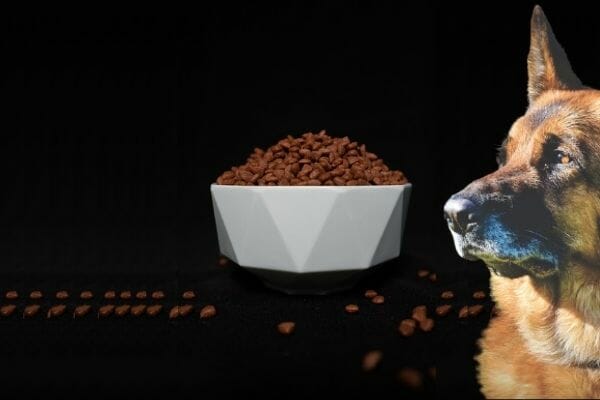
The following are the different diets you can choose to feed your German Shepherd, with information about the benefits and drawbacks.
You can switch from one to another if you find that it isn’t working or if your dog is a picky eater. Just make sure you make a gradual change over the span of at least a week.
New elements should always be added slowly to your dog’s food otherwise it could lead to upset stomachs and loose stools.
Here are some of the best dog foods for German Shepherds:
1. Raw Food
The raw diet is perhaps the most controversial choice. You have some vets, breeders, and experts that swear by it, while others condemn the BARF (biologically appropriate raw food).
Raw food is basically just raw human-grade food such as veggies and meat you can get at the store. If you opt for this diet, we suggest purchasing organic and the highest quality meats.
Raw food can contain harmful bacteria if it’s not fresh that could lead to salmonella and E. Coli. This diet came about because there are a few experts that believe dogs would benefit from a diet that mirrors one their ancestors survived on.
People on the other side of the argument believe that dogs have evolved since then, become more domesticated, and thrive better on a kibble diet if it’s of good quality and is well balanced.
Before doing a switch from kibble or cooked food to a raw diet, make sure you get your vet’s advice because this is quite a drastic change.
2. Dry Food/Kibble
Dry food, or kibble, is the most popular dog food. It’s very economical, keeps well, and is the most affordable compared to all the rest on the list. Dry food can be very high in nutrition and can contain enough to give your dog a balanced diet.
Dry food is great as a base and works well with food toppers and food from the other categories.
Due to its shape and hard quality, kibble also helps to promote dental health. The hard surface will scrape against your dog’s teeth as he chews to remove and prevent plaque and tartar buildup.
This doesn’t mean you can forgo teeth brushing, but the frequency can be decreased. Since kibble is considered dry food, make sure your GSD has access to plenty of water.
Kibble is recommended for puppy food because there are recipes that are specifically developed for puppies and even German Shepherd breed puppy food. The kibble can come in various sizes to accommodate various breed sizes as well.
3. Wet/Canned Food
Wet food or canned food is great for a semi-moist diet, where dog owners top off dry dog food with wet food. Wet food has a much higher moisture content than dry kibble, which makes it a great choice for dogs who don’t drink a lot of water.
Wet food is also much more flavorful, and it is preferred by many picky dogs.
The downside to wet food is the price tag and shelf life. It is more expensive and doesn’t keep as well as dry food. If your dog doesn’t finish everything, you will need to refrigerate the leftovers.
Unfortunately, because it has a higher moisture content, there is less “room” for nutrients, which means your dog will need to eat more to meet his needs.
More food means more money out of your pocket. Again, we suggest pairing wet food with dry dog food for the best of both worlds.
4. Home-made/Fresh Diet
A homemade or fresh diet is basically people’s food prepared in the right way.
You can do it yourself, but it’s time-consuming, and if you don’t have knowledge about what your dog needs, you may be inadvertently depriving him of essential nutrients.
If you do want to go this route and prepare your dog’s meals yourself, make sure you consult with a nutritionist, vet, or some other expert to create a few suitable recipes.
If a fresh diet appeals to you but you just don’t have the time, you can consider subscription dog food, which is a company that curates the ingredients, prepares it for you, and ships it out in properly portioned packages ready to serve.
Yes, it can be expensive to feed your dog a fresh diet and you need a lot of freezer space to keep the food fresh, but it’s the least processed option aside from a raw diet.
Going with a fresh food subscription is easy. Farmer’s Dog Food is such a company that does all the hard work.
All you need to do is fill in your GSD’s relevant information such as his name, weight, activity level, and even flavor preference.
Most of these companies will have various options such as full meals or topper plans and subscriptions you can renew every week, bi-weekly, or annually.
Useful Supplements for German Shepherds
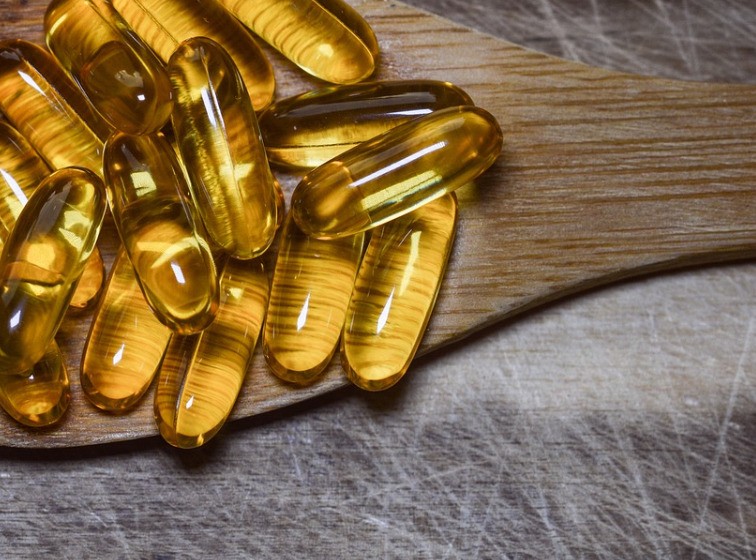
As we said before, German Shepherds may need supplements if the dog foods chosen don’t supply enough. Food toppers are excellent add-ons because they taste yummy to your GSD, and they round out their meals.
You can also go for the pill or powder supplements that are independent of dog food. You would either mix it into your dog’s bowl during meal times or feed it to him separately as instructed.
What supplements does your GSD need nutritionally?
1. Probiotics
Probiotics are a safe and very common supplement that helps with digestion. It introduces healthy and good bacteria into your dog’s digestive tract that aids in the breakdown of food.
Probiotics are suitable for dogs of all ages and breeds. Additional benefits include improved food absorption, boosting the immune system, improved digestion, decreased inflammation, and promoting good gut bacteria.
2. Healthy Digestive Enzymes
Digestive enzymes play a similar role to probiotics in the sense that they also improve your dog’s gut health, helps with food absorption, and boost the immune system.
3. Fish Oil
Fish oil is a great additive to mix in with German Shepherd puppy food. It not only promotes skin and coat health, but you also get a side of joint protection with it. Fish oil contains omega fatty acids that can also provide the following benefits.
- Brain protection
- Improve cognitive and eye health
- Reduces inflammation
4. Glucosamine and Chondroitin
These supplements are recommended for adult food. Traces of both of these ingredients can be found in certain adult food brands, but not in amounts large enough to give more thorough protection.
These help to promote bone and cartilage protection, enhance your dog’s mobility, and reduces any pain he may already have in those areas.
5. Antioxidants
Antioxidants are great in puppy and adult food and are great for humans as well. Antioxidants help to boost the immune system and keep all major organs healthy and functioning.
Your dog’s health is number one, and diets full of vitamins, minerals, and fruits will add more antioxidants.
6. CBD Oil
This is not the controversial weed you are thinking about as CBD oil doesn’t consist of any THC. CBD oil is commonly suggested by vets for large breed dogs and large breed puppies that suffer from various forms of anxiety.
Aside from that, CBD oil is great for pain reduction, appetite stimulation, and anxiety and stress relief.
What to Avoid Feeding Your German Shepherd

Now that you know what to feed your GSD, it’s also important to know what to avoid.
We already mentioned commercial dog foods that are of poor quality and a raw food diet that isn’t fresh, but other things you should definitely avoid include the following:
- Uncooked bones
- Alcohol
- Avocado
- Chocolate
- Coffee and caffeine
- Fruit seeds (apple and orange)
- Grapes and raisins
- Macadamia and other nuts high in fat and oil
- Milk and dairy as many dogs are lactose intolerant
- Onions
- Garlic
- Salty foods
- Corn, wheat and soy
- Xylitol
And the list goes on, but these are the ones that are found in many homes and should definitely be kept out of your dog’s reach.
How to Feed My German Shepherd

All this information answers how much to feed your dog, but how exactly should your German Shepherd be fed?
We’re talking about the frequency and the length of time.
1. Feeding Length
Again, we start with a generalization, but a large breed such as the GSD usually takes 8 to 10 minutes to finish their food.
If your GSD is only taking a couple of minutes to finish his meal, then he could be a fast eater.
In this case, it could lead to bloating and digestive issues, so we would suggest incorporating the use of a slow feeder bowl.
This is a bowl with raised ridges, nubs, or both inside the bowl. In order to get to his food, your dog will need to eat around the patterns, which will effectively slow down his eating.
Then there are dogs on the other side of the spectrum that eat incredibly slowly.
The grazers and free feeders will fall into this category. If your dog is this type of eater, you can either try to correct the situation or place his entire day’s worth of food out at once.
Quick eaters, especially those who believe there is food scarcity, have a higher chance of being aggressive and exhibit resource guarding. Resource guarding is when dogs feel the need to “guard” what is of value to them, which is mostly treats and food.
Dogs who are free feeders, meaning they have access to their food at any given time, are less likely to become aggressive with food and treats.
2. Feeding Frequency
A German Shepherd puppy needs to eat 3 to 4 times a day, with their daily meals being split into smaller portions. Why do puppies need to eat more frequently? It’s because it helps them digest food faster and also gives you a better grasp of their potty schedule.
Once a GSD puppy nears adulthood, or around a year old, you can reduce the frequency to twice a day, or even once if you plan to free feed your pooch. The feeding schedule shouldn’t need to change much when your dog enters his golden years.
Frequently Asked Questions
Do German Shepherds need a lot of food?
Yes, German Shepherds do require a lot of food compared to other breeds. This is because they are large dogs that usually lead an active lifestyle.
An adult GSD may need as much as 3 cups of food a day, but much of how much you feed your dog will depend on unique considerations such as age, size, life stage, and health.
How much should I feed my GSD puppy?
A normal healthy GSD puppy will require anywhere between 1 to 2.5 cups of food depending on the age and lifestyle.
A larger puppy may also need more food, and the gender of your pooch may play a part as well since males are largely bigger than females.
As your GSD reaches adulthood, you will need to feed it anywhere between 2 to 3.5 cups of food daily.
Conclusion
It’s crucial to pay attention to your dog’s diet. If you go for commercial dog food, make sure to read the ingredient list to make sure you are feeding German Shepherds a well-balanced diet.
Remember that a dog’s life stage, age, size, and activity levels will impact how much food it needs. Be open to tailoring your dog’s diet when necessary.

